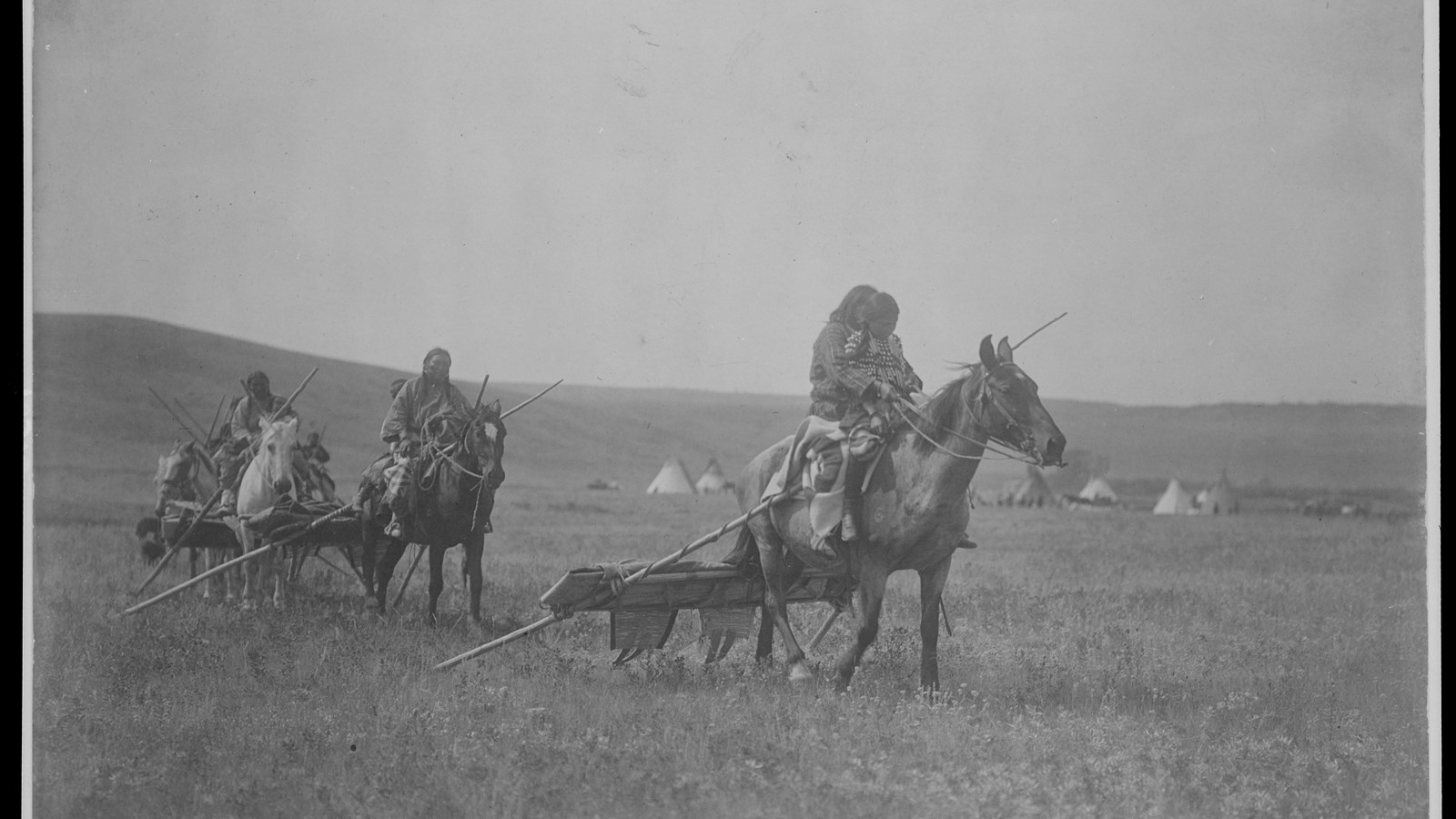Last updated: November 28, 2023
Place
Road to the Buffalo-Alice Creek

Library of Congress
Historical/Interpretive Information/Exhibits, Parking - Auto, Picnic Table, Toilet - Vault/Composting, Trailhead
Nez Perce people told Meriwether Lewis and William Clark about a well-traveled trail that would take them back to the great falls of the Missouri River. It had deep ruts and would be easy even for anyone to follow, even these visitors who were not familiar with the area.
The Nez Perce name for the trail was Qoq’aalx ‘Iskit, or the Road to the Buffalo, since it took travelers from the mountains to the plains, where large bison herds lived.
Indigenous people had used this trail for thousands of years, and migrating wildlife had used it for thousands more. Kootenai, Salish, Blackfeet, Crow, and Shoshone people also traveled on this path. They brought horses and carried loads with travois, a horse cart made with two long sticks. They followed the trail to hunt bison and to trade with other communities connected by this and adjoining trails.
A traveler could see signs of those who came before them: ruts in the ground, trees with bark peeled off, and rock cairns.
Nez Perce people explained to Lewis that, at one point, “the roads forked they recommended the left hand as the best rout but said they would both lead us to the falls of the Missouri.” Nez Perce and other Indigenous people had traveled this trail for generations. It was so well-worn that they trusted these total outsiders—who usually needed to hire local guides to help them get around—to be able to find and follow the route themselves.
About this article: This article is part of a series called “Pivotal Places: Stories from the Lewis and Clark National Historic Trail.”
Lewis and Clark NHT Visitor Centers and Museums
This map shows a range of features associated with the Lewis and Clark National Historic Trail, which commemorates the 1803-1806 Lewis and Clark Expedition. The trail spans a large portion of the North American continent, from the Ohio River in Pittsburgh, Pennsylvania, to the mouth of the Columbia River in Oregon and Washington. The trail is comprised of the historic route of the Lewis and Clark Expedition, an auto tour route, high potential historic sites (shown in black), visitor centers (shown in orange), and pivotal places (shown in green). These features can be selected on the map to reveal additional information. Also shown is a base map displaying state boundaries, cities, rivers, and highways. The map conveys how a significant area of the North American continent was traversed by the Lewis and Clark Expedition and indicates the many places where visitors can learn about their journey and experience the landscape through which they traveled.
